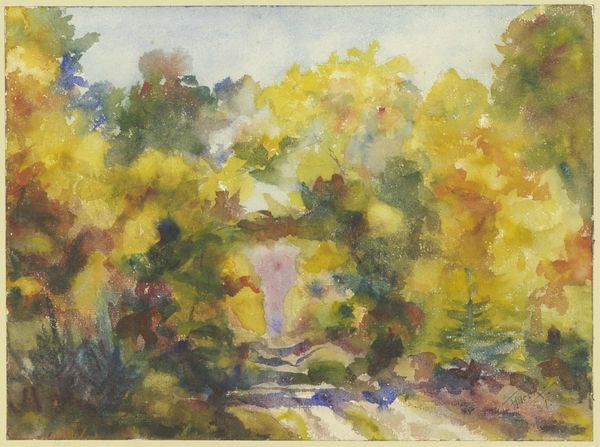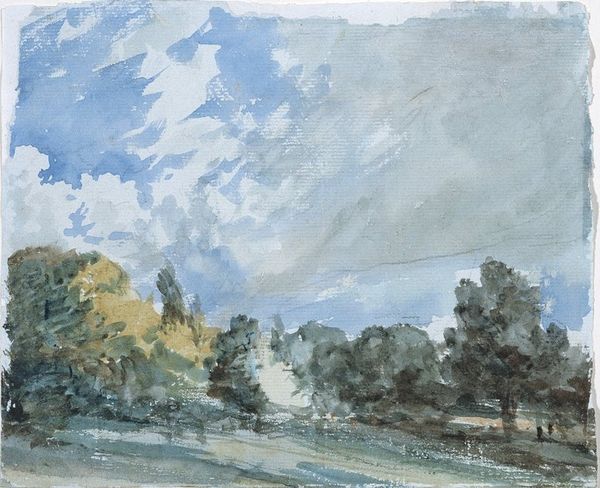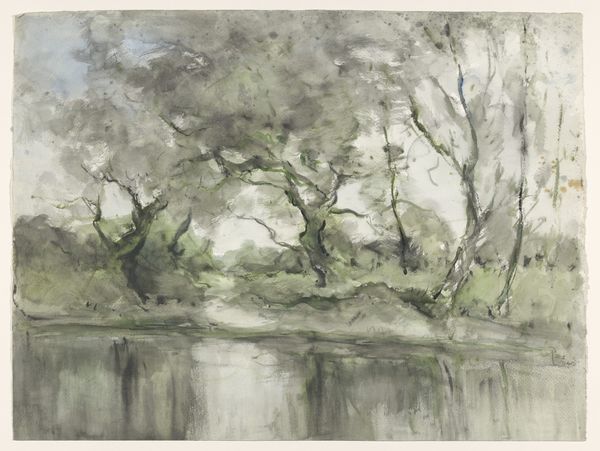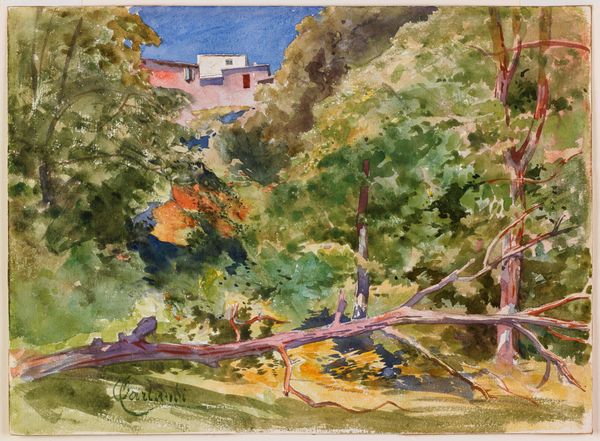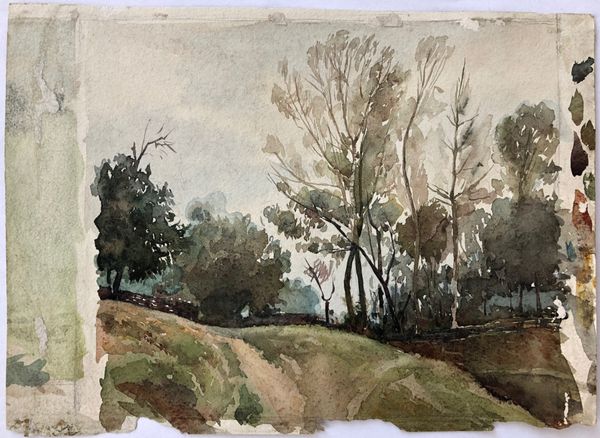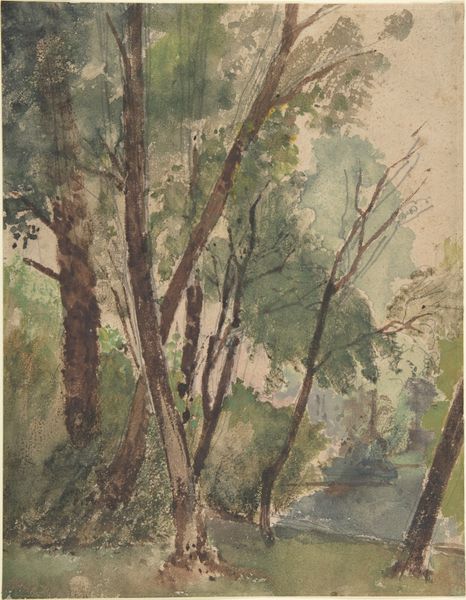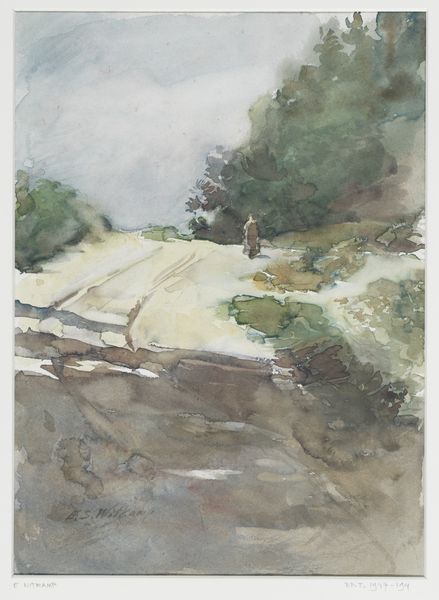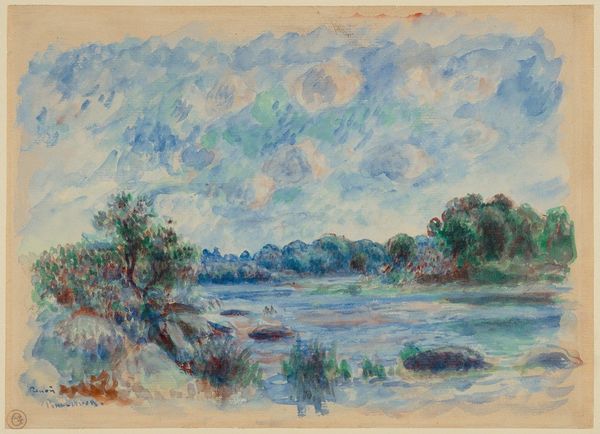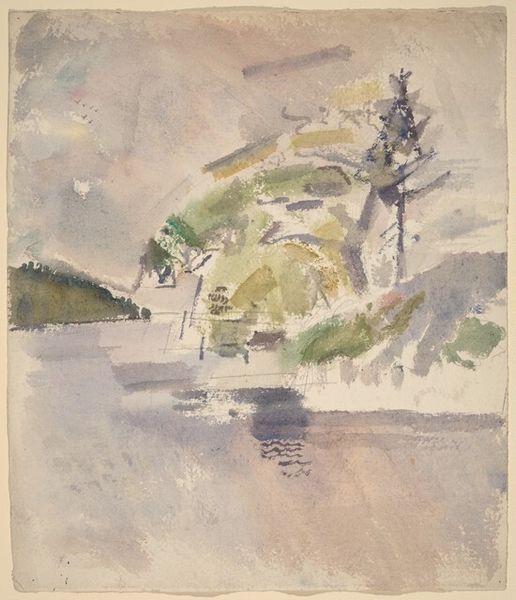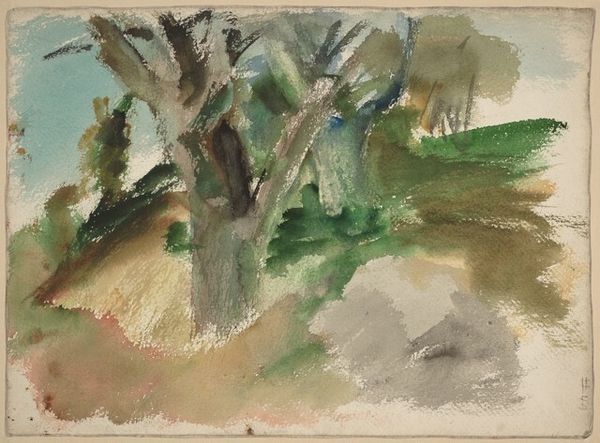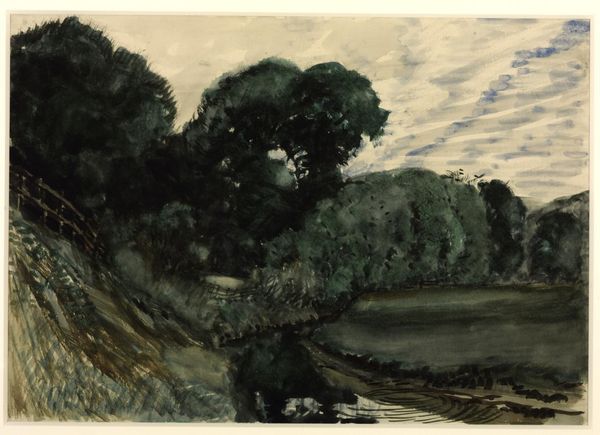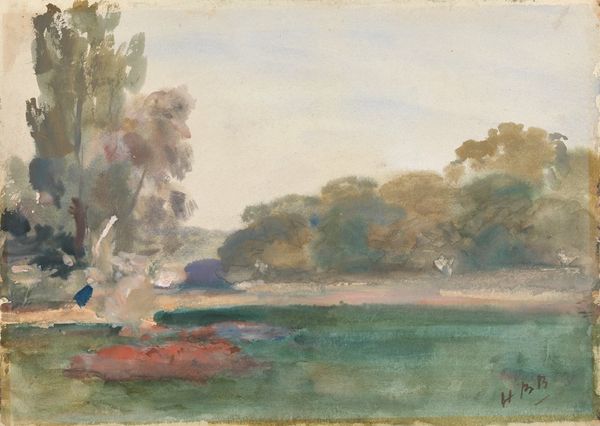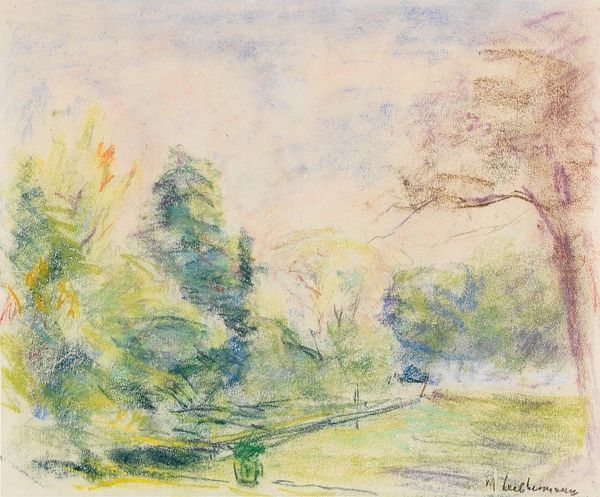
Copyright: Public Domain
Editor: Friedrich Mook's "Flat Landscape," painted around 1917, is rendered in watercolor on paper, and it has this ethereal, dreamlike quality. The colors feel muted, almost like a faded photograph. What is your perspective on it? Curator: Given the period, it's easy to see this work in the context of broader anxieties surrounding World War I. While seemingly a peaceful landscape, the use of impressionistic techniques like watercolor blurs the lines of representation. Was this detachment from reality an attempt to process and escape the horrors of war? Editor: That's an interesting point. The way the trees kind of dissolve into the sky… almost feels like a loss of solidity, a fragility. Do you think the artwork suggests how individuals were being impacted and perceived during this period? Curator: Precisely! Think about the role of the landscape in art history before the war: often idealized, a symbol of national pride. Here, that tradition is subverted. The land is present, but ambiguous and somewhat melancholy. Considering that Mook lived through a very chaotic time, I'd argue this work shows a breakdown of old values, as well as changing ideals relating to both nature and culture. Do you agree? Editor: Absolutely, the distortion contributes to an almost haunting aesthetic. It reflects the destabilization of society amid modernization and political crisis. This viewpoint enhances my initial sense of a muted yet resonating commentary! Curator: Yes! And understanding this painting’s relationship to its tumultuous context offers more depth to what might have been previously seen as merely “beautiful” scenery. It opens us to thinking about how such idyllic scenes might function as critical responses to broader sociopolitical forces at a time of great global upheaval.
Comments
No comments
Be the first to comment and join the conversation on the ultimate creative platform.
